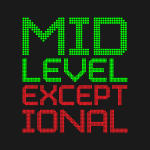What Is the Salary Floor?
During the 2013-14 season, the Philadelphia 76ers came dangerously close to falling under the NBA’s salary floor.
The latest collective bargaining agreement mandates that, as of the 2013-14 season, each team must meet a minimum team salary equivalent to 90 percent of the salary cap. (In 2013-14, that figure was $52.811 million.) This must happen by the start of each team’s final regular-season game.
What happens to teams that fail to do so? Well… nothing, really. They just distribute the shortfall among their players in a way determined by the players’ association.
Here’s the exact phrasing from the CBA [Article VII, Section 2(b)], :
In the event that a Team’s Team Salary for a Salary Cap Year as of the start of the Team’s last Regular Season game of that Salary Cap Year is less than the applicable Minimum Team Salary for that Salary Cap Year, the NBA shall cause such Team to make payments equal to the shortfall (to be disbursed to the players on such Team pro rata or in accordance with such other formula as may be reasonably determined by the Players Association). The Players Association shall provide the NBA with its proposed distribution of any such shortfall within thirty (30) days after the completion of the Audit Report for such Salary Cap Year. The NBA shall cause the Team to make the required payments, less all amounts required to be withheld be any governmental authority, within ten (10) business days after receipt of the proposed distribution from the Players Association in accordance with the preceding sentence.
What gets factored into the minimum-team-salary calculation?
- The salaries of all active players.
- The salaries of any waived players.
- The salaries of any players who were released via amnesty or the stretch provision.
- Salary being paid to retired players (per the terms of the retired players’ contracts).
- Salaries of players who suffered career-ending illnesses or injuries.
- The full-season salary of any player acquired via trade during the season.
The following are not included in minimum team salary:
- All cap holds.
- Players signed to summer contracts (and released before the first day of the regular season).
- Full-season salaries of players traded away during the season.
- Money paid toward buyouts for international players.
In the 2013-14 Sixers’ case, being so far under the minimum team salary—they entered the season roughly $7.5 million shy of the threshold, Mark Deeks wrote for SB Nation—gave them significant flexibility at the trade deadline. They met the floor with their series of deadline-day deals, per Deeks, including the offloading of Evan Turner and Lavoy Allen for Danny Granger (who they quickly waived) and a future second-round pick.
So, if certain teams enter the 2014-15 season below the projected salary floor of $56,880,000 (based on the projected cap of $63.2 million), there’s no need to panic. Those teams will have nearly six months to make enough moves to reach the salary floor, if so desired.
And if one or more teams decide not to hit the floor, they’ll only be lining the pockets of their current players even more.


